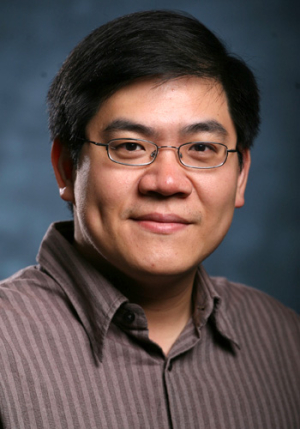Assistant Professor Wei-Chuan Shih has won a National Science Foundation CAREER Award, making him the fourth professor with the Cullen College of Engineering to do so this year. This is also the first CAREER Award from the NSF’s Biophotonics Program granted to an institution in the greater Houston area.
Designed to help junior-level faculty launch long-term successful research careers, CAREER awards are among the most prestigious grants in the sciences; the CAREER program is one of only a handful of faculty awards that are factored in the official Top American Research University rankings.
Shih, a member of the Department of Electrical and Computer Engineering, won the five-year, $400,000 grant to develop a new method to rapidly identify, count and profile bacteria with minimal sample preparation – a tool that would be incredibly useful in medical diagnostics, national security and food and environmental safety.
At the heart of the method is Raman microspectroscopy, a technique of “fingerprinting” molecules by shining laser light on them. Exactly how a molecule causes the laser’s incident photons to scatter, as evidenced by a change in color, can be used for identification purposes.
Traditional Raman microspectroscopy, however, examines only one small point at a time. As a result, imaging just a square millimeter can take several hours or longer, making it impractical outside the laboratory setting.
Shih is working to speed up this process by combining two different Raman microspectroscopy techniques – including one that utilizes nanotechnology – with novel instrumentation and integrated computational image analysis.
A key component is a programmable multiple-point Raman microspectroscopy system. By splitting the laser into multiple spots, Shih has devised an instrument that can image roughly 100 points at once, dramatically shortening the time needed to analyze a biological sample.
To further speed the process, Shih also plans to utilize a technique known as Surface-Enhanced Raman Spectroscopy, or SERS.
SERS relies on localized surface plasmon resonance (LSPR), the collective oscillation of valence electrons in metal nanoparticles in resonance with the frequency of the incident light. Shih is leveraging this property by building gold nanostructures that can effectively attach to cells and their derivatives. The enhanced electrical field resulting from LSPR will boost the Raman scattering of molecules near bacteria surfaces in contact with nanostructures.
This boost will allow Shih to quickly identify possible bacteria among human cells and other environmental particles. A more comprehensive Raman microspectroscopy analysis of those subjects can then be performed, allowing for the identification of bacteria species.
Shih noted that although identifying specific bacteria types is the ultimate goal, it is likely that simply detecting the presence of bacteria can be useful in many situations outside the lab.
“In many cases, doctors just want a yes or no answer. They’re not looking to identify the bacteria, they just want to know if they are present,” Shih said. “If we can answer that question quickly and efficiently, there’s a real possibility that we could develop a system that is applicable to a clinical setting.”
